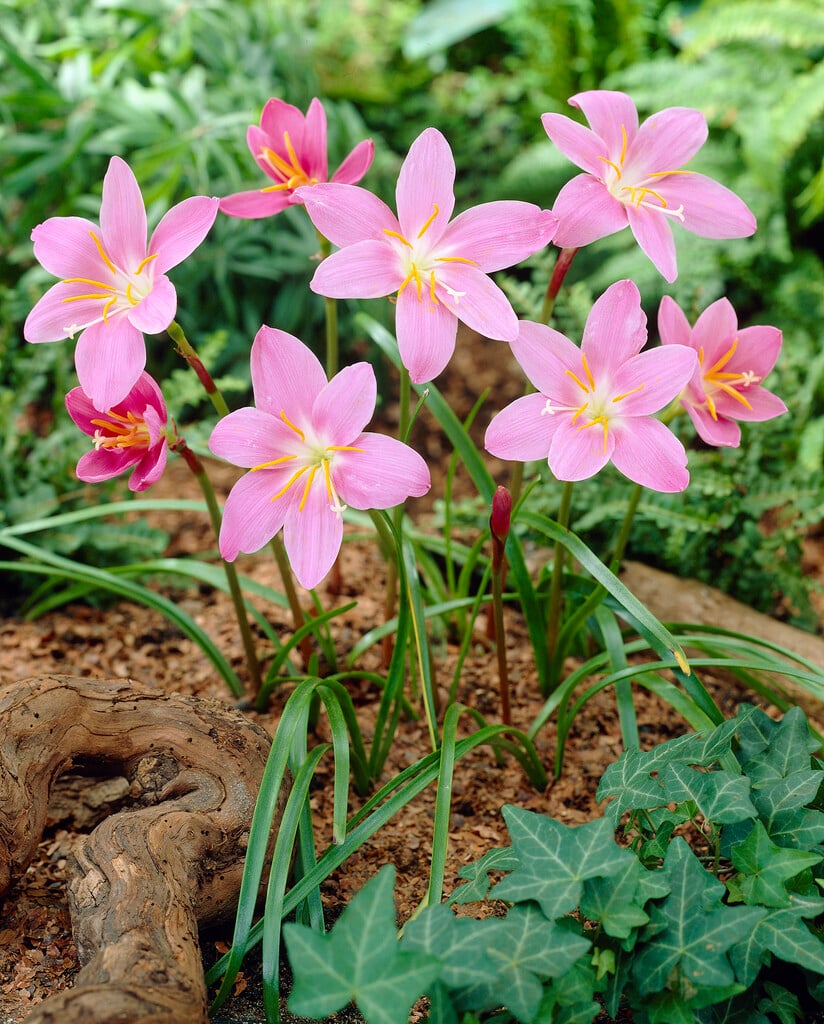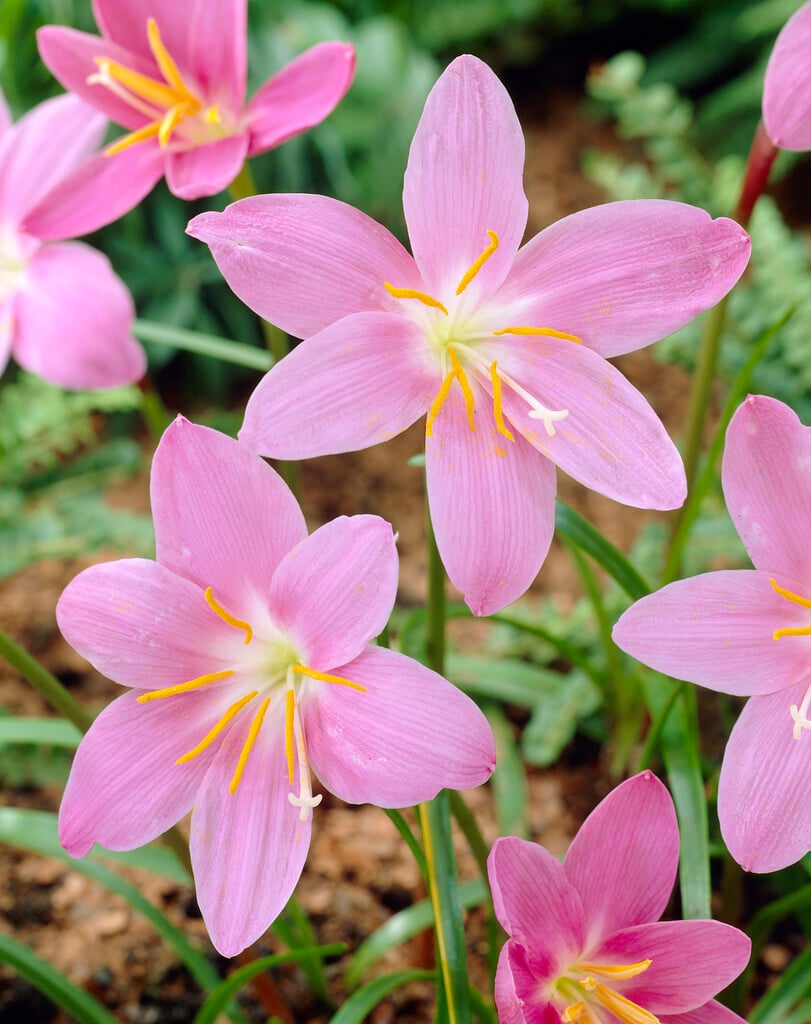Size
Ultimate height
0.1–0.5 metresTime to ultimate height
2–5 yearsUltimate spread
0–0.1 metreGrowing conditions
Moisture
Well–drainedpH
Alkaline, NeutralColour & scent
| Stem | Flower | Foliage | Fruit | |
| Spring | ||||
|---|---|---|---|---|
| Summer | Pink | |||
| Autumn | ||||
| Winter |
Position
- Full sun
- Partial shade
Aspect
South–facing or East–facing or West–facing
Exposure
Sheltered Hardiness
H2Botanical details
- Family
- Amaryllidaceae
- Native to GB / Ireland
- No
- Foliage
- Deciduous
- Habit
- Bushy
- Potentially harmful
- All parts of the plant are mildly toxic if ingested. Sap can cause skin irritation. Wear gloves and other protective equipment when handling
- Genus
Habranthus are small, bulbous perennials with linear or narrowly strap-shaped leaves and solitary funnel-shaped flowers in summer and autumn
- Name status
Correct
- Plant range
- Brazil to Argentina
How to grow
Cultivation
Grow under glass in peat-free, loam-based compost with added grit, in bright, filtered light. Provide a balanced liquid feed monthly during the growing period. Reduce watering in winter but do not allow to become completely dry
Propagation
Propagate by seed sown in containers at 16-18C as soon as ripe. Bulb propagation by the removal of offsets and potting them up separately, may be done in spring
Suggested planting locations and garden types
- Patio and container plants
Pruning
no pruning required
Pests
Generally pest-free
Diseases
Generally disease-free
Love gardening
Sign up to receive regular gardening tips, inspiration, offers and more
View our Privacy Policy
Get involved
The Royal Horticultural Society is the UK’s leading gardening charity. We aim to enrich everyone’s life through plants, and make the UK a greener and more beautiful place.

